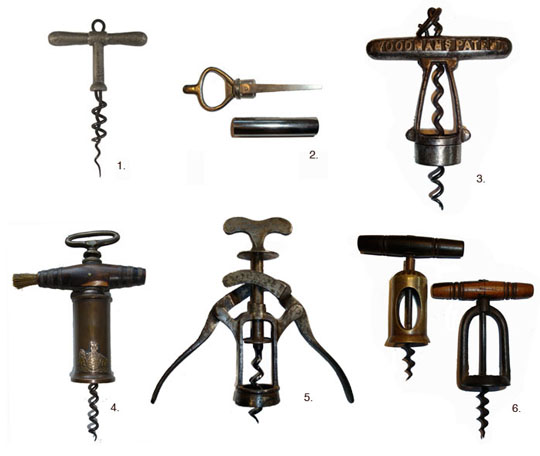
Best 6 (+1) ~ 2008

| 1. Joshua Barnes’ American patent # 179,090. Marked “PAT. JUNE 27 76.“ Reference ~ (Bull, 1999, 16) (O’Leary, 1999, 41) (Peters, 1999, 60). |
2. Unusual prong puller with sheath. Similar to the Maschil Converse 1899 patent prongs, however instead of a wooden handle, it features a caplifter, and is marked “PATENT APPLIED FOR” on the prongs. Maschil Converse was awarded many patents, one of which is for a rivet. Patent 625,491 awarded in 1899 explains that “My present invention relates more especially to self -setting hardened-steel or other hard-metal rivets, pins, and studs to be fixed in ductile, wrought, or malleable cast metal…It is frequently desirable that the head ends of rivets, pins, or studs or analogous members should not project beyond the external surfaces of the parts attached and that the same be of hardened metal.”
While no prongs are shown in the patent drawing, given the same sheath, and similar prongs to the more common version of the Converse, it would seem that this indeed is a Converse cork extractor, albeit an unusual variant under a combination of 1899 patents; 624,457 and 625,491. |
| 3. Wilber B. Woodman’s American patent # 344,556; marked “WOODMAN’S PATENT, PATD JANY,6 1886.” Reference ~ (Bull, 1999, 16) (O’Leary, 1999, 75) (Peters, 1999, 123). |
| 4. Edward Thomason’s 1802 British Patent # 2617. The Thomason III, or Thomason Variant, carries a badge, which reads “THOMASON’S PATENT, NE PLUS ULTRA, ” on the barrel. Reference ~ (Bull, 1999, 159) (Wallis, 1997, 16). |
| 5.William Burton Baker’s 1880 British Patent # 2950. The Baker I is marked “A1 PATENT, JAMES HEELEY AND SONS PATENT DOUBLE LEVER, PATENT.” Reference ~ (Bull, 1999, 87) (Peters, 1999, 203) (Wallis, 1997, 85). |
| 6. Charles Chinnock’s American Patent # 35,362. The barrel version is marked “CHINNOCK’S PATENT MAY 27, 1862.” The open frame version is marked on the handle “PAT MAY 27, 18 ” with the year mostly obscured. Reference ~ (Bull, 1999, 16) (O’Leary, 1999, 33) (Peters, 1999, 106). |